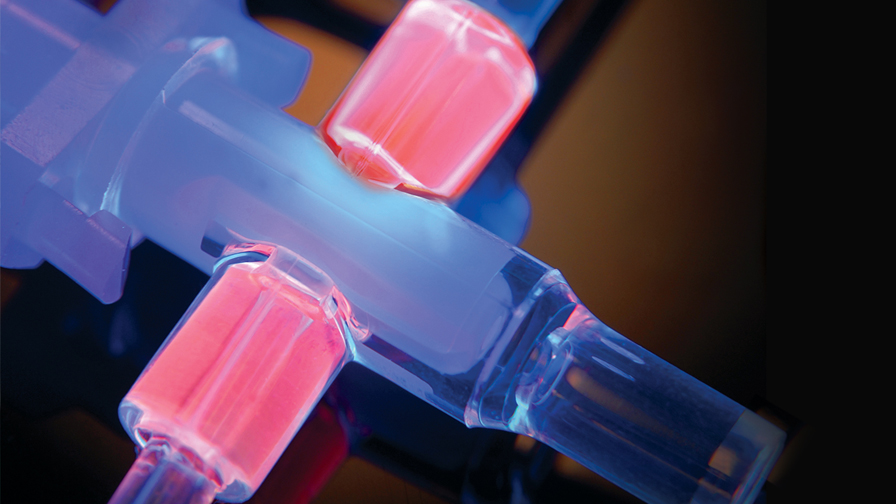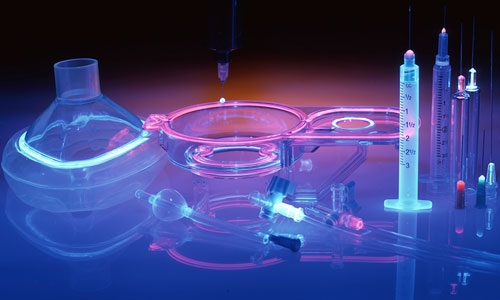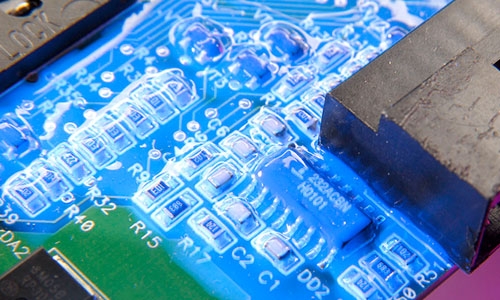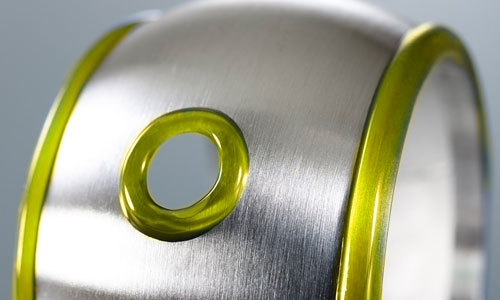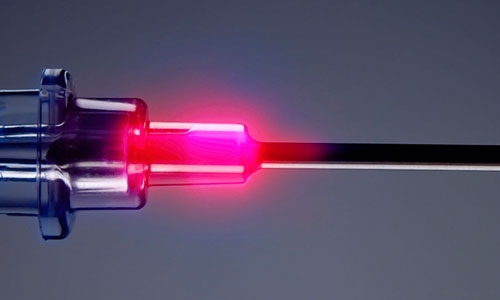La fluorescence permet une inspection visuelle plus facile des lignes de liaison
Vous avez probablement déjà connu la déception de voir votre objet ou votre gadget préféré se désintégrer parce que les pièces n'étaient pas bien assemblées. Pour un fabricant de composants utilisés dans des applications critiques, comme les diagnostics médicaux in vitro ou les capteurs des ADAS automobile , le scénario d'une défaillance de leurs appareils est intolérable et peut mettre en danger la vie des utilisateurs. Des pièces d'un appareil médical peuvent se détacher et rester dans le corps ou une lentille optique utilisée dans le LiDAR du véhicule pour détecter d'autres voitures sur l'autoroute peut se désaligner, envoyer un faux signal et provoquer un accident.
Il existe d'innombrables méthodes d'assemblage de pièces, des rivets et des vis au soudage par ultrasons et aux adhésifs, et de nombreuses raisons peuvent expliquer la rupture ou la séparation de leurs joints. Les causes de défaillance comprennent la contrainte de cisaillement, la fatigue du substrat, la contamination de la surface avant le traitement, la compression et les conditions environnementales telles qu'une humidité ou une chaleur élevée, ainsi que la défaillance des liaisons. Par conséquent, un examen minutieux des pièces pendant et après l'assemblage pour détecter d'éventuels défauts est essentiel au processus de fabrication global.
Comment les entreprises peuvent-elles garantir que leurs pièces ne tomberont pas en panne ? Grâce à un contrôle qualité et une inspection constants et continus. Les méthodes classiques incluent la pré-production ou l'examen pièce par pièce, la mise hors ligne d'un produit et le test d'un échantillon, ou via des systèmes d'inspection visuelle automatisés. Dans la fabrication de dispositifs médicaux, par exemple, les produits à usage unique tels que les cathéters et les seringues sont fabriqués en quantités de plusieurs milliers à la fois, de sorte que l'inspection doit être précise, mais aussi rapide. Lorsque des adhésifs sont utilisés pour assembler des composants, il est impératif que les substrats à coller soient suffisamment chargés en matériau pour qu'il n'y ait pas d'espace et que l'adhérence soit sûre.
Pour faciliter ce processus, la formulation d'un composé fluorescent dans un adhésif permet aux fabricants de s'assurer que la bonne quantité de produit a été appliquée sur les composants et de vérifier que la ligne de liaison durcie est intacte. Lorsqu'il est exposé à une lumière noire de faible intensité, la couleur fluorescente de l'adhésif offre un contraste significatif et une grande visibilité par rapport aux substrats. Lorsqu'il est utilisé dans un système de vision optique, la capacité de fluorescence est rapidement capturée à l'écran et indique immédiatement si le composant passe ou échoue l'inspection.
Qu’est-ce que la technologie fluorescente dans les matériaux photopolymérisables ?
Le processus de fluorescence des produits chimiques se produit lorsque l'énergie de courte longueur d'onde est absorbée par le matériau et que la lumière résultante est émise à une longueur d'onde plus longue, mais d'intensité plus faible. Par la suite, lorsque le matériau est exposé à une lumière noire UV, il émet une couleur distincte dans la partie visible du spectre lumineux détectable par l'œil humain ou un système de vision automatisé. La fluorescence est un phénomène temporaire et une fois la source lumineuse retirée, le matériau ne brille plus.
Il existe différents agents fluorescents colorés présents dans les matériaux photopolymérisables actuellement sur le marché. La fluorescence bleue est souvent utilisée dans les revêtements conformes pour les circuits imprimés, la fluorescence jaune se trouve dans SpeedMask® 731-REV-A , un masquant utilisé dans les processus de finition de surface MRO et la technologie de fluorescence brevetée Ultra-Red® est formulée dans une variété d'adhésifs pour dispositifs médicaux Dymax. Chaque type de fluorescence est destiné à fournir une alternative rapide et simple à l'inspection visuelle manuelle, mais d'autres offrent des avantages supplémentaires.
La fluorescence bleue émet une lueur très brillante et est particulièrement utile lorsqu'elle est utilisée dans revêtements conformes sur les PCB où il existe un risque de zones d'ombre. Il est plus facile de détecter le manque de couverture de matériau et les vides dans ces pics et vallées avec un revêtement de couleur bleu brillant qu'avec un revêtement transparent sans capacité fluorescente.
La fluorescence jaune de la résine de masquage SpeedMask® 731-REV-A permet une vérification visuelle facile du placement du matériau et indique que la pièce est exempte de résidus de masquant après le traitement et le retrait.
Adhésifs Dymax formulés avec des technologies brevetées Technologie Ultra-Red® Les composés fluorescents émettent une fluorescence intense après exposition à l'énergie de la lumière UV. La couleur rouge vif contraste extrêmement bien sur les masques de soudure, les composants et les plastiques qui émettent naturellement une fluorescence bleue (comme le PVC), ce qui facilite grandement l'inspection visuelle de la ligne de liaison ou de la zone revêtue. Lorsqu'il est mesuré, ce composé produit un pic d'énergie unique qui ne peut pas être reproduit par d'autres composés fluorescents, offrant aux fabricants la possibilité d'assembler ou de marquer leurs produits afin qu'ils puissent être identifiés de manière positive.
Les avantages de l'utilisation de matériaux photopolymérisables avec technologie fluorescente pour le contrôle qualité sont évidents, depuis la confirmation de la couverture complète du matériau jusqu'à la vérification visuelle des lignes de liaison, mais l'avantage le plus important est la confiance du fabricant que ses pièces finies ne décevront pas ses clients.
Vous souhaitez savoir comment améliorer votre processus d’inspection qualité avec des adhésifs et des revêtements fluorescents ?


